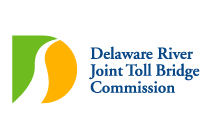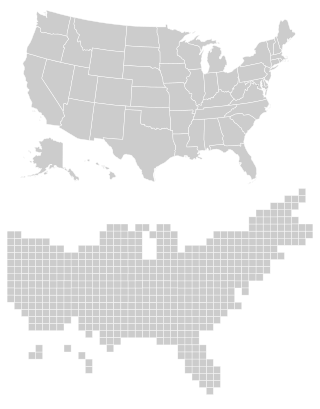
Article One of the United States Constitution establishes the legislative branch of the federal government, the United States Congress. Under Article One, Congress is a bicameral legislature consisting of the House of Representatives and the Senate. Article One grants Congress various enumerated powers and the ability to pass laws "necessary and proper" to carry out those powers. Article One also establishes the procedures for passing a bill and places various limits on the powers of Congress and the states from abusing their powers.

The Twenty-third Amendment to the United States Constitution extends the right to participate in presidential elections to the District of Columbia. The amendment grants to the district electors in the Electoral College, as though it were a state, though the district can never have more electors than the least-populous state. How the electors are appointed is to be determined by Congress. The Twenty-third Amendment was proposed by the 86th Congress on June 16, 1960; it was ratified by the requisite number of states on March 29, 1961.

Interstate 95 (I-95) is the main north–south Interstate Highway on the East Coast of the United States, running from U.S. Route 1 (US 1) in Miami, Florida, north to the Houlton–Woodstock Border Crossing between Maine and the Canadian province of New Brunswick. The highway largely parallels the Atlantic coast and US 1, except for the portion between Savannah, Georgia, and Washington, D.C., and the portion between Portland and Houlton in Maine, both of which follow a more direct inland route.

In the United States, the Electoral College is the group of presidential electors required by the Constitution to form every four years for the sole purpose of voting for the president and vice president. Each state appoints electors under the methods described by its legislature, equal in number to its congressional delegation. The federal District of Columbia also has 3 electors under an amendment adopted in 1961. Federal office holders, including senators and representatives, cannot be electors. Of the current 538 electors, a simple majority of 270 or more electoral votes is required to elect the president and vice president. If no candidate achieves a majority there, a contingent election is held by the House of Representatives to elect the president and by the Senate to elect the vice president.

The Delaware River Port Authority (DRPA), officially the Delaware River Port Authority of Pennsylvania and New Jersey, is a bi-state agency instrumentality created by a congressionally approved interstate compact between the state governments of Pennsylvania and New Jersey. The authority is principally charged to maintain and develop transportation links between the two states with four bridges and a mass transit rail line across the Delaware River. Though the DRPA has "port" in its name, it does not own or operate any ports.

The Connecticut Compromise was an agreement reached during the Constitutional Convention of 1787 that in part defined the legislative structure and representation each state would have under the United States Constitution. It retained the bicameral legislature as proposed by Roger Sherman, along with proportional representation of the states in the lower house or House of Representatives, and it required the upper house or Senate to be weighted equally among the states; each state would have two representatives in the Senate.

The Delaware River Joint Toll Bridge Commission (DRJTBC) is a bistate, public agency that maintains and operates river crossings connecting the U.S. states of Pennsylvania and New Jersey. The agency's jurisdiction stretches roughly 140 miles (230 km) along the Delaware River from Philadelphia and Bucks County in southeast Pennsylvania and then north through the Lehigh Valley and to Pennsylvania-New York state border.

The National Popular Vote Interstate Compact (NPVIC) is an agreement among a group of U.S. states and the District of Columbia to award all their electoral votes to whichever presidential ticket wins the overall popular vote in the 50 states and the District of Columbia. The compact is designed to ensure that the candidate who receives the most votes nationwide is elected president, and it would come into effect only when it would guarantee that outcome. Introduced in 2006, as of January 2024 it has been adopted by sixteen states and the District of Columbia. These jurisdictions have 205 electoral votes, which is 38% of the Electoral College and 76% of the 270 votes needed to give the compact legal force.
The Dresden School District is the first interstate school district in the United States. It operates the Francis C. Richmond Middle School and Hanover High School in Hanover, New Hampshire. The district is part of the New Hampshire's School Administrative Unit (SAU) 70, which also includes two other school districts, each with its own school board: the Hanover School District, which operates the Bernice A. Ray Elementary School in Hanover, and the Norwich School District, which operates the Marion Cross Elementary School in Norwich, Vermont.

The drafting of the Constitution of the United States began on May 25, 1787, when the Constitutional Convention met for the first time with a quorum at the Pennsylvania State House in Philadelphia, Pennsylvania to revise the Articles of Confederation. It ended on September 17, 1787, the day the Frame of Government drafted by the convention's delegates to replace the Articles was adopted and signed. The ratification process for the Constitution began that day, and ended when the final state, Rhode Island, ratified it on May 29, 1790.

The Mount Vernon Conference was a meeting of delegates from Virginia and Maryland held March 21–28, 1785, to discuss navigational rights in the states' common waterways. On March 28, 1785, the group drew up a thirteen-point proposal to govern the rights of both states on the Potomac River, Pocomoke River, and Chesapeake Bay. Known as the Mount Vernon Compact and formally titled as the Compact of 1785, this agreement not only covered tidewater navigation but also extended to issues such as toll duties, commerce regulations, fishing rights, and debt collection. Ratified by the legislature of both states, the compact helped set a precedent for later meetings between states for discussions into areas of mutual concern.
The Treaty Clause of the United States Constitution establishes the procedure for ratifying international agreements. It empowers the President as the primary negotiator of agreements between the United States and other countries, and holds that the advice and consent of a two-thirds supermajority of the Senate renders a treaty binding with the force of federal law.

In the United States, a state is a constituent political entity, of which there are 50. Bound together in a political union, each state holds governmental jurisdiction over a separate and defined geographic territory where it shares its sovereignty with the federal government. Due to this shared sovereignty, Americans are citizens both of the federal republic and of the state in which they reside. State citizenship and residency are flexible, and no government approval is required to move between states, except for persons restricted by certain types of court orders.

The Oklahoma Water Resources Board (OWRB) is an agency in the government of Oklahoma under the Governor of Oklahoma. OWRB is responsible for managing and protection the water resources of Oklahoma as well as for planning for the state's long-range water needs. The Board is composed of nine members appointed by the Governor with the consent of the Oklahoma Senate. The Board, in turn, appoints an Executive Director to administer the agency.

The Northeast Interstate Dairy Compact was an agreement among the six New England states to support the farm price of milk at a higher level than under federally mandated minimum prices in the region.
Radioactive waste is generated from the nuclear weapons program, commercial nuclear power, medical applications, and corporate and university-based research programs. Some of the materials LLW consists of are: "gloves and other protective clothing, glass and plastic laboratory supplies, machine parts and tools, and disposable medical items that have come in contact with radioactive materials". Waste is generally categorized as high level waste (HLW) and low-level waste (LLW). LLW contains materials such as irradiated tools, lab clothing, ion exchanger resins, animal carcasses, and trash from defense, commercial nuclear power, medical, and research activities. These materials usually have radioactivity that have short half lives—from ranges of multiple days to several hundred years. In 1990, 1.1 million cubic feet of LLW was produced. Currently, U.S. reactors generate about 40,000 cubic meters of low-level radioactive waste per year, including contaminated components and materials resulting from reactor decommissioning.
The Eastern States Multi-state Council is an interstate compact between seven northeastern states in the United States to coordinate the rollback of economic restrictions implemented by the state governments in response to the COVID-19 pandemic.
There is ongoing legal debate about the constitutionality of the National Popular Vote Interstate Compact in the United States. At issue are interpretations of the Compact Clause of Article I, Section X, and states' plenary power under the Presidential Electors Clause of Article II, Section I.










